Cloud-based intelligence can help serve as a nervous system for controllers handling multiple building domains.
Preet Sibia, Power and Sensor Systems, Robert Junker • Infineon
The core principle of building automation is the centralized control of a building’s domain, such as HVAC, shading, lighting, access control systems and more. Real-time monitoring of usage patterns and equipment is crucial for this centralized control. In the case of physical plant and equipment, sensor-based intelligence can help reduce equipment failures and extend lifetimes via predictive maintenance practices. Condition monitoring based on sensor data changes the building management paradigm from reactive to proactive. This is particularly true for heating, ventilation, as well as HVAC systems.
The U.S. Energy Information Agency reports that HVAC accounts for about one-third of the energy used by commercial and industrial buildings. The effects of unscheduled HVAC downtime can range from annoying office conditions to life-threatening problems in health care facilities. Failing HVAC equipment may also degrade air quality, particularly important during the COVID-19 pandemic. Thus there are clear benefits to HVAC monitoring and analysis functions that trigger maintenance before problems arise.
Two challenges arise when implementing a “smart” HVAC system. The first concerns building-in the sensors and edge processing resources to collect operating data. The second is in creating the data analysis necessary for automated, real-time decision making. To address both issues, Infineon partnered with IoT specialist Klika Tech and cloud provider AWS on an end-to-end evaluation kit. The kit leverages cloud services and machine learning (ML) for predictive-maintenance-enabled HVAC systems.
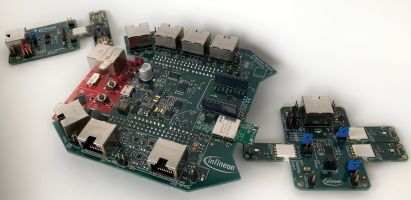
For developers, Infineon offers an evaluation kit dedicated to predictive maintenance. It includes magnetic, current sensors and hall sensors and switches, a barometric pressure sensor and a MEMS microphone. Edge processing is via an Arm Cortex MCU. An end-to-end secured Internet connection from the edge to cloud resources is enabled with a dedicated secure element. This secure element provides hardware security and authentication for zero-touch cloud provisioning and multi-account registration.
Predictive maintenance setups should monitor the condition of the most critical components inside the system. For HVAC systems these are air-moving fans, motors, compressors and air filters. The parameters of such components can be monitored by one or more sensing elements the board supports, including:
•Air flow measurement based on barometric pressure sensing
•Current measurement at the fan and compressor via magnetic current sensors
•Position sensing of the motor with 3D magnetic sensor
•Linear vibration and movement measurement using a linear Hall sensor
•Lid position detection with Hall sensors
•Speed and direction measurement using a double Hall sensor
•Sound anomaly detection with a MEMS microphone
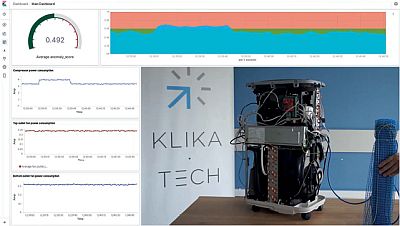
A portable air conditioning system demonstrates typical predictive maintenance scenarios. The sensor- equipped unit monitors current flow, the hot and cold fans, and the compressor. It produces a real-time view of component status and flags anomalies that might trigger inspection or maintenance. When air-flow through a filter, monitored using a barometric sensor, declines over time, replacement can be based on actual conditions rather than an assumed filter lifetime.
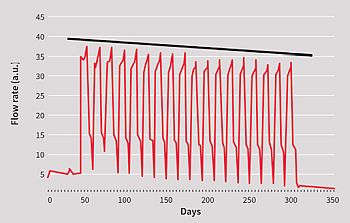
The evaluation kit’s software handles data capture/logging and pre-processing, then sends data to the cloud. In turn, a Klika Tech integration connects the Amazon FreeRTOS enabled evaluation kit to a cloud-based platform for data collection and condition monitoring. Via AWS IoT Services for data analysis and predictive services, end-users can implement predictive maintenance and anomaly detection features for HVAC devices.
Another role for cloud-based intelligence in building automation is as a nervous system for controllers handling multiple building domains. The HVAC control system is one such domain. Other examples are in-building transport such as elevators and escalators, as well as access control. Radar and time-of-flight (ToF) sensors are often used in both transport and access control, detecting people and movement while protecting personal privacy.
Electrical systems, including lighting and power, security and alarm systems, as well as the information and communication technology (ICT) infrastructure can all be automated. Presence detection systems based on radar, ToF and even MEMS microphones, can feed data into building management systems to control lighting, power and room temperature, as well as security and building access. Energy infrastructure, as well as plumbing and water heating systems, can be monitored via increasingly intelligent power supply and conditioning ICs.
Sensor technologies also boost the capabilities of this digital nervous system. Measuring the flow of people helps manage and predict occupancy levels. The demand for such technologies has been exacerbated by the COVID-19 pandemic. Infineon launched a smart-entrance-counter evaluation kit employing a sensitive and low-power 60-GHz radar IC. Use of radar is more economical than alternatives such as ordinary cameras, which can be costly and violate privacy, or passive infrared cameras which can be unreliable and are not concealable. Most importantly, radar technology keeps personal data 100% protected.
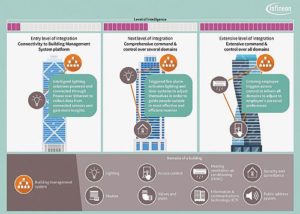
The evolving architecture of smart buildings has been compared to the evolution of autonomous driving platforms. In this concept, predictive maintenance is on Tier 1, linking one domain to a building management system (BMS) platform. In-room sensors for presence detection add data used to trigger heating or cooling. Ultimately the domains will feed data to a comprehensive building operations platform and extend control over automated operations and management of multiple systems.
McKinsey estimates global spending for all major systems and equipment used in buildings to be more than $1.5 trillion annually. It’s probably no surprise that global revenue for smart building technologies is on track to double in the first half of this decade. In short, smart buildings are smart business.


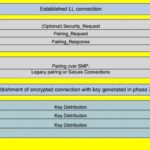

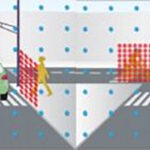

Leave a Reply